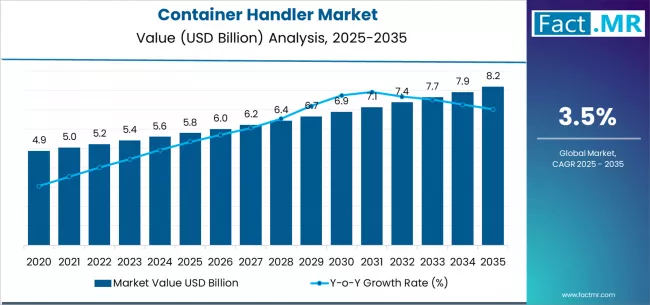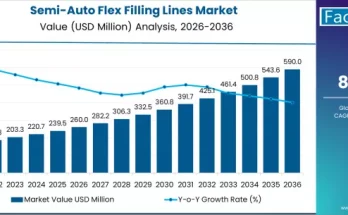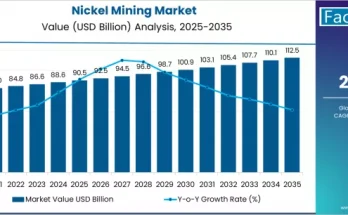The container handler market is experiencing significant growth as global trade, port operations, and logistics networks continue to expand. Container handlers, which include reach stackers, forklifts, straddle carriers, and container cranes, are critical for efficient cargo movement, storage, and handling in ports, warehouses, and intermodal terminals.
With increasing globalization and the need for faster, more reliable cargo operations, container handlers are becoming indispensable tools for port authorities, logistics providers, and shipping companies. The market reflects the rising demand for automation, high-capacity machinery, and technology-driven solutions to optimize container handling efficiency.
Market Overview
Container handlers are designed to move, stack, and load containers safely and efficiently. These machines are engineered to manage heavy loads, minimize turnaround times, and improve operational safety in port terminals and industrial logistics hubs.
The market is driven by technological advancements such as automation, telematics, and electric-powered equipment, which allow operators to monitor performance, reduce energy consumption, and enhance productivity. Manufacturers are focusing on high-capacity, durable, and versatile machines that can adapt to varying container sizes, weights, and operational environments.
As e-commerce and international trade continue to grow, container handlers are increasingly integrated into smart logistics systems that track shipments in real time, optimize storage layouts, and ensure timely loading and unloading operations. Environmental considerations, including emission reductions and energy-efficient equipment, are also shaping market development, particularly in regions with strict environmental regulations.
Regional Insights
North America
North America represents a leading market for container handling equipment, supported by robust port infrastructure, advanced logistics networks, and high standards for safety and operational efficiency. The adoption of electric and hybrid machinery and the integration of telematics solutions are key drivers of regional growth.
Europe
Europe is focused on environmentally sustainable logistics, pushing demand for energy-efficient, low-emission container handling equipment. The region emphasizes automation, predictive maintenance, and compliance with strict operational and environmental regulations, driving innovation in advanced container handler designs.
Asia-Pacific
Asia-Pacific is a rapidly growing market due to expanding trade volumes, industrial growth, and increasing investments in ports and logistics infrastructure. Countries like China, India, and Japan are upgrading container handling systems to improve efficiency and throughput, leading to strong demand for modern, high-capacity machinery.
Rest of the World
Latin America, the Middle East, and Africa are witnessing gradual adoption of advanced container handling equipment. Port modernization projects, rising industrialization, and increasing trade activities are encouraging the deployment of mechanized solutions for efficient cargo movement and terminal management.
Key Trends & Forecast
- Automation and Smart Terminal Integration
Automated container handlers and telematics-enabled systems are enabling ports and warehouses to operate with minimal human intervention. Smart monitoring allows for real-time operational analysis, predictive maintenance, and optimized container movement. - Shift Toward Electric and Hybrid Equipment
Environmental sustainability is becoming a critical driver. Electric and hybrid container handlers reduce emissions and operational costs while meeting regulatory standards. These solutions are increasingly preferred in regions with strict environmental compliance requirements. - Focus on High-Capacity and Versatile Equipment
Manufacturers are developing multi-purpose handlers capable of lifting containers of various sizes and weights. High-capacity machines reduce operational delays and improve overall terminal throughput. - Data-Driven Operations and IoT Integration
The integration of IoT and digital monitoring platforms allows operators to track equipment performance, fuel consumption, and maintenance schedules, improving efficiency and minimizing downtime. - Sustainability and Operational Efficiency
Eco-friendly designs, reduced fuel consumption, and low-noise operation are becoming important considerations. Manufacturers are incorporating energy-efficient engines, regenerative braking, and lightweight materials to reduce environmental impact while maintaining performance.
Applications & End-Use Outlook
Container handlers are integral across multiple logistics and industrial sectors. Their applications span port operations, shipping, and warehouse management, ensuring efficient cargo handling and storage.
- Ports and Terminals: Reach stackers and straddle carriers are used for stacking containers, loading ships, and organizing yard layouts efficiently.
- Shipping Companies: Equipment helps in quick and safe transfer of containers, improving turnaround times and overall supply chain efficiency.
- Industrial and Manufacturing Facilities: Forklifts and container handlers enable efficient internal movement and storage of goods, supporting production continuity.
- Intermodal Freight Terminals: Handlers ensure smooth transfer of containers between rail, road, and sea, optimizing logistics networks and reducing delays.
- E-Commerce and Distribution Centers: Modern handlers improve warehouse efficiency by enabling faster loading, unloading, and storage of goods.
The integration of automated and smart monitoring systems allows operators to optimize container movements, reduce congestion, and maintain operational safety in increasingly busy logistics hubs.
Challenges and Opportunities
The market faces challenges such as high initial investment costs, maintenance complexity, and a need for skilled operators to manage advanced equipment. Additionally, fluctuations in global trade volumes can impact demand for container handling machinery.
However, opportunities are abundant. Innovations in automation, battery-powered handlers, and predictive maintenance are creating more reliable, efficient, and environmentally friendly equipment. Emerging markets with growing trade volumes, port expansion projects, and modernization initiatives present significant growth potential. Strategic collaborations between manufacturers and logistics companies are further driving technological adoption and market penetration.
Conclusion
The container handler market is central to modern logistics and port operations, enabling efficient, safe, and sustainable container movement. As global trade and industrial activities continue to expand, the demand for advanced, high-capacity, and eco-friendly container handling equipment will grow.
Integration of automation, smart monitoring, and energy-efficient solutions ensures that container handlers remain critical tools for enhancing operational productivity while reducing environmental impact. Investing in modern container handling machinery is essential for ports, logistics providers, and industrial operators seeking to optimize cargo operations and maintain a competitive edge in an increasingly interconnected global economy.
Browse Full Report – https://www.factmr.com/report/3956/container-handler-market



